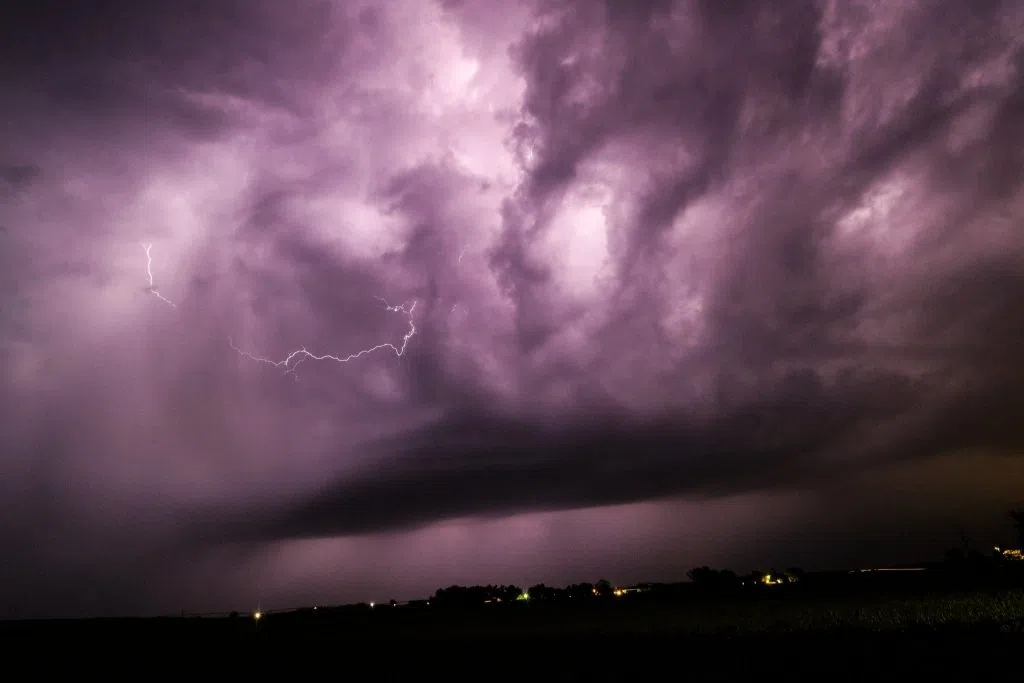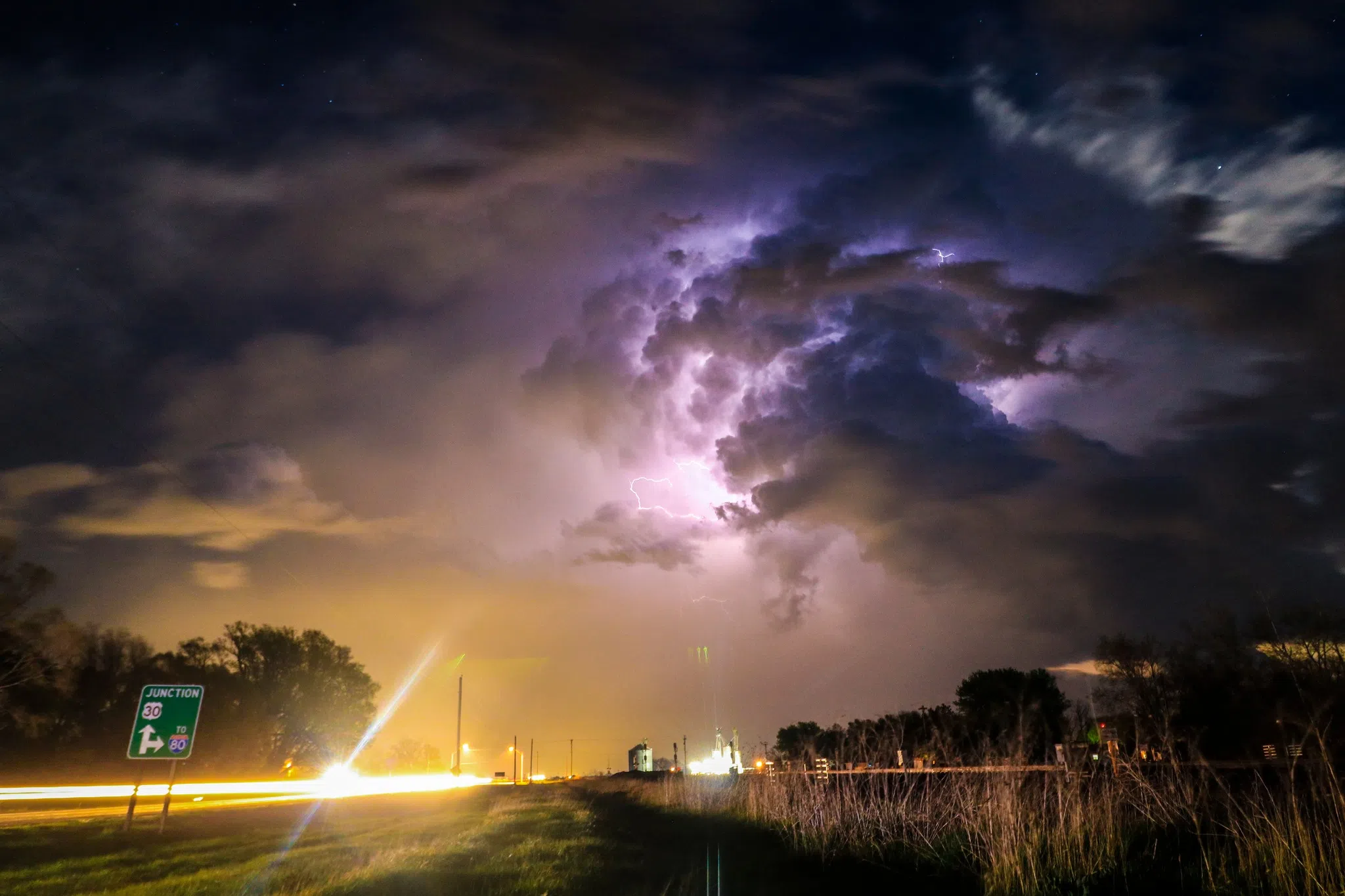HASTINGS — Of all the natural phenomena spawned by severe weather, lightning is one of the most spectacular, but there are some common misconceptions regarding how it works and how to stay safe.
“Lightning is a giant spark of electricity in the atmosphere between clouds, the air, or the ground. In the early stages of development, air acts as an insulator between the positive and negative charges in the cloud and between the cloud and the ground,” per the National Severe Storms Laboratory, (NSSL).
Thunderstorms have the ability to separate areas of positive and negative electrical charge in and around them, which creates powerful electric fields.
When opposite charges build up enough in regions in a storm, the insulating capacity of air brakes down and there is a rapid discharge of electricity that is known as lightning. The flash of lightning temporarily equalizes the charged regions until the opposite charges build back up, NSSL states.
Lightning can occur between opposite charges within the thunderstorm cloud, intra-cloud lightning, or between opposite charges in the cloud and on the ground, cloud-to-ground lightning.
In the most common cloud-to-ground (CG) negatively charged step leaders channel their way through the air to connect with positively charged upward moving step leaders.
When they connect, a channel is completed and the return stroke, or what we observe as a lightning strike.
The air around lightning becomes super-heated and explodes as a supersonic wave that then transitions to an acoustic wave within a few feet. This rapid expansion of the air radiates outward one mile every five seconds.
The resulting sound is heard as thunder.
“Thunder can be heard up to 25 miles away from the lightning discharge, but the frequency of the sound changes with distance from the lightning channels that produce it, because higher frequencies are more quickly absorbed by the air,” the NSSL states.
If you are extremely close to a lightning strike, the thunder will come from the closest channels and produce a sound like tearing because of the higher frequencies. A few seconds later, there will be a sharp click or loud crack from lightening channels farther away.
The farther away from a lightning strike, the more the thunder sounds like a low rumbling, due to the lower frequencies.
Because light travels through the air around a million times faster than sound does, one can roughly estimate their distance to lightning.
“Just count the number of seconds from the time you see a flash until you hear thunder. Sound travels approximately one fifth of a mile per second or one third of a kilometer per second, so dividing the number of seconds by five gives the number of miles to the flash and dividing by three gives the number of kilometers,” the NSSL states.
Most flashes never reach the ground and is known as intra-cloud (IC) lightning. Cloud flashes sometimes have visible channels that extend out into the air around the storm but does not strike the ground.
Sheet lighting is used to describe an IC flash embedded within a cloud that lights up as a sheet of luminosity during the flash.
CG strikes are separated into two different categories, positive and negative, and refer to the net charge that is transferred.
More commonly, the ground gains negative charge from a strike and is referred to as a negative CG. Conversely, if the ground gains a positive charge, this is a positive CG.
“The return stroke of a negative CG travels about 60,000 miles per second back towards the cloud. A negative CG flash consists of one or perhaps as many as 20 return strokes,” the NSSL states.
Negative CGs seem to flicker, as the process rapidly repeats several times along the same path.
For the laymen the different is relatively simple. If directly struck, a negative CG could kill you, a positive CG will kill you.
This is due to the fact that the strongest positive CGs are roughly ten times stronger than the average negative CGs. Positive CGs can reach temperatures of 54,000 degrees, around five times hotter than the surface of the Sun.
However, positive CGs are rarer and only account for five to ten percent of ground flashes seen worldwide. In the Plains they can be more common and are often seen just down stream of strong thunderstorm updrafts.
“Storms which produce mostly negative CGs tend to produce CGs earlier in the storm lifecycle and produce significantly more CGs than similar storms which instead produce mostly positive CGs,” per the NSSL.
A “bolt from the blue,” is a CG which starts inside a cloud and goes out the side of the storm, travels horizontally away from the cloud before going from the ground. The CG can seemingly strike an area that is clear above it.
For this reason, a storm that is six miles away can still pose a lightning strike hazard.
Regarding safety, the National Weather Service states:
- No outdoor location is safe during a thunderstorm.
- Plan ahead and stay informed about the weather.
- Seek immediate shelter in a sturdy building or enclosed vehicle when thunder is heard.
- Avoid seeking shelter in non-sturdy shelter.
- Wait at least 30 minutes after the last thunder before resuming outdoor activities.
- If safety indoors is not an option, there are methods to reduce the risk of being struck. However, its important to know that outdoor environments do not provide complete safety. When venturing outside, stay informed with the latest weather forecast.
- Avoid open fields, elevated areas, and tall, isolated objects like trees and telephone poles.
- If camping, seek shelter in valleys or ravines; tents do not provide protection.
- If in a group, spread out to minimize the risk of lightning traveling between individuals.
- Move away from water and wet items immediately, and avoid objects that conduct electricity, such as power lines and fences.
Regarding indoor safety:
- Avoid direct contact with electricity sources, such as plugged-in appliances.
- Refrain from using plumbing facilities, including washing hands, bathing, or washing dishes.
- Keep away from windows, doors, and porches.
- Avoid lying on concrete floors or leaning against concrete walls.
- Ensure the safety of pets by not leaving them in dog houses or chained outside.




